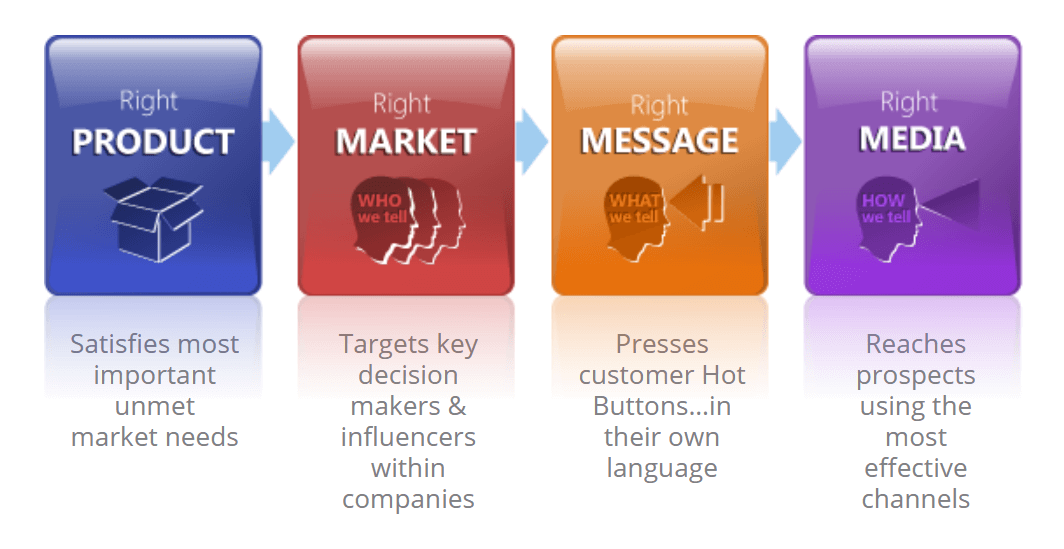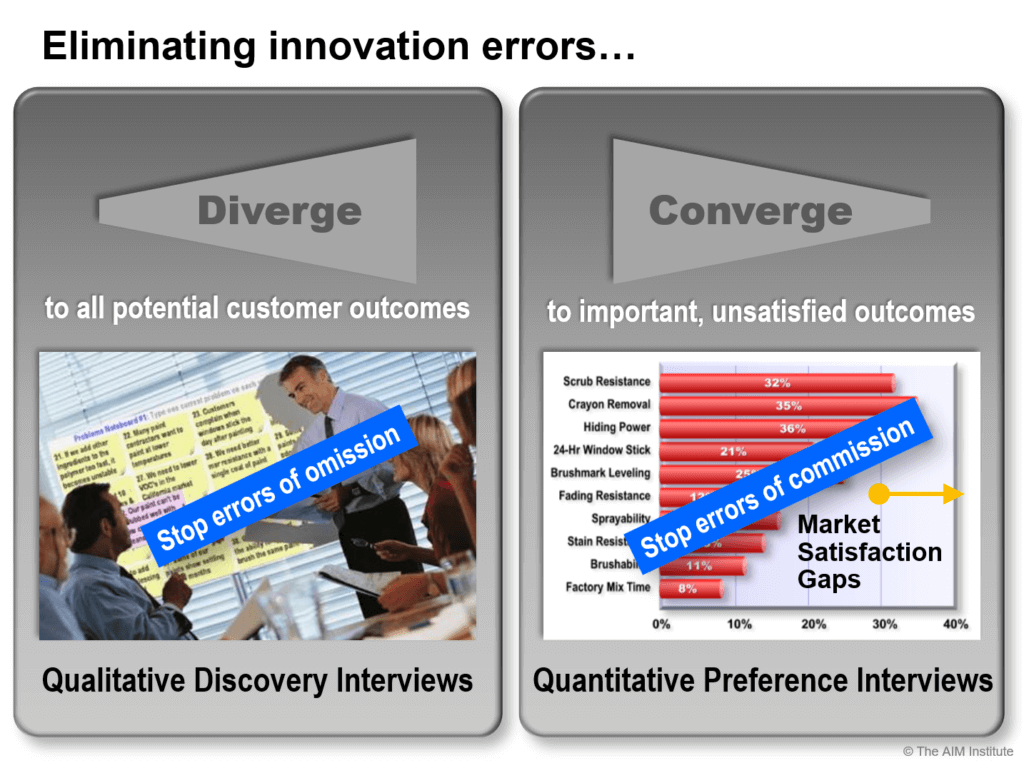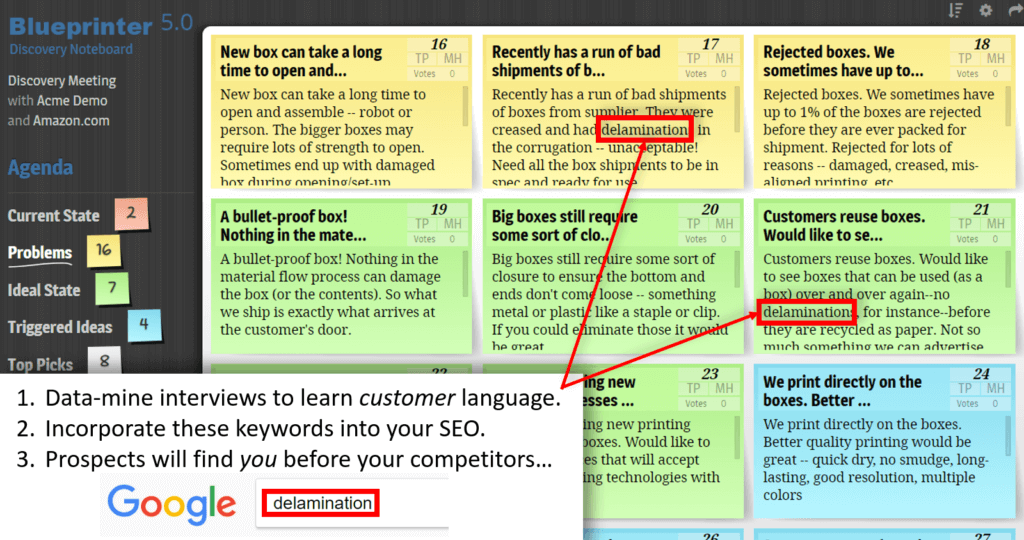B2B Product Launch: How to get it right

Imagine you spent two years developing a new product, and have just executed your B2B product launch. You’re waiting to tell your boss about exciting new sales… and waiting. As the months go by and you get more feedback from the field, you realize the market has responded to your launch with one big, collective… yawn.
What went wrong? Low marketing budget? Weak digital promotion? Uninspired messaging? Perhaps, but it’s likely your launch was doomed a couple of years ago, in your early-stage marketing. To understand if this is happening to you, let’s begin at the end—with what a successful launch should look like.
Components of a Great B2B Product Launch
Great B2B product launches get four things right: The right product is launched to the right market with the right message through the right media. In other words, you develop a product the market truly wants, and then do a great job with who to tell, what to tell, and how to tell.

Turns out each of these steps is impacted by what you do in the front-end of innovation. You must conduct strong early-stage marketing AND link it tightly to your late-stage marketing. Let’s examine each of these four launch steps for their early-stage links…
The Right Product
The main cause of failed product launches is failed customer insight. We asked B2B professionals with over 10,000 years of combined experience what leads to strong new-product value propositions. (See “What Drives B2B Organic Growth,” pg 10, at www.aimresearchreports.com) The top three drivers were…
- Front-end work
- Market concentration
- Customer interviews
Consider #1 and #3: You should interview customers in the front-end to avoid two types of innovation errors: omission and commission. An error of omission is failing to uncover a customer need; Blueprinting practitioners use divergent, qualitative Discovery interviews to avoid these. An error of commission is choosing the wrong customer need to work on; Blueprinting users conduct convergent, quantitative Preference interviews to eliminate these. (Both are described in “Guessing at Customer Needs” at www.aimwhitepapers.com.)
Click here to learn more about AIM’s B2B product launch system
In our experience, there is one thing above all else that will lead to more successful product launches and less wasted R&D at your company. That’s securing unbiased, unfiltered hard data directly from customers on what they want. If you’re not using something like a Market Satisfaction Gap (see illustration), it’s unlikely anything else you do will have a major impact on your product launch success rate.

The Right Market
This ties directly to the second driver of strong value propositions in our research: Market concentration. This is targeting a specific market segment—a cluster of customers with similar needs—that is winnable and worth winning.
When we teach our LaunchStar B2B product launch methodology to teams lacking solid front-end work, we routinely see these signs of sloppy market segmentation:
- They don’t target markets based on clear consideration of their business’s strategic intent.
- They try to launch a single product into multiple market segments, making a hash of their messaging.
- They classify customers according to assumed market segment definitions instead of true segments.
- Within their target market segment, they fail to target the right customer job functions.
Reality-based market segmentation is a powerful competitive advantage.
Most people think front-end customer interviews are all about learning which customer outcomes to pursue. While that’s the main objective, interviewing is also needed to avoid problems #3 and #4 above. Over and over again, we see client teams redefining their target market segments based on what they learn during their interviews. Reality-based market segmentation is a powerful competitive advantage… and the first step to a winning product launch.
These teams also learn which job functions to target. Based on what they hear during interviews, they develop a clear picture of who the key decision-makers and decision-influencers are. And that’s critical for the next step—messaging—because customer marketing, technical and operations personnel typically attend different trade shows, visit different websites, and respond best to different value propositions.
The Right Message
Your messaging will probably be “close” if you’ve done a good job with the right product and right market. But you can absolutely “nail” your messaging if you do some extra front-end work. Here’s what we’ve coached hundreds of teams to do for each key customer outcome:
- During interviews, learn how customers measure the extent to which the outcome is being satisfied.
- Using these test methods, ask them to describe “barely acceptable” and “totally satisfied” results.
- Ask customers how the outcome is best satisfied today (often by competitors’ products).
- Using the above information, set up your own side-by-side testing against competing products.
Of course, the main reasons you do all this is to ensure your new product a) provides advantages over the next best alternative, and b) doesn’t add unnecessary costs by exceeding an outcome’s “totally satisfied” point. But a huge extra benefit is this: You’ll have competitive test data to convincingly demonstrate your new product’s advantages in your product launch messaging.
The Right Media
It’s wise to consider 9 traditional and 9 online forms of media for your launch. For more on this, download our e-book, “12 New Rules of B2B Product Launch.” Give special consideration to “Search Marketing.” Getting prospects to your website is incredibly important to a great product launch. In fact, research shows that 80% of B2B transactions are initiated by the customer, not the supplier. How? They find what they’re looking for through a Google (or Baidu, Bing, etc.) search.
It’s probably “game over” for you if a competitor has a satisfactory site with a better Google search ranking.
Research also shows that it’s probably “game over” for you if a competitor has a satisfactory site with a better Google search ranking. The key for you is good SEO (search engine optimization) and the key to that is predicting which keywords prospects will search for.
So what’s all this have to do with your front-end work? During customer interviews, you need to capture verbatim customer responses, that is, record as much of their actual terminology as possible. The words they used during your interviews will likely be the same words they type into a Google search box later.
The Blueprinting Advantage for B2B Product Launch
Note to Blueprinting users: Your cloud-based Blueprinter software now lets you do Google-type word searches across your entire company—not just your project. So start data-mining all of your company’s Discovery interviews to plan your search engine optimization.

Learning More about B2B Product Launch
You probably noticed that we combined two topics here… B2B front-end innovation and product launch. So should you if you want great new product launches. You can learn more by checking out our e-books on each topic.
Better yet, learn how to master both topics by attending our open workshops on New Product Blueprinting and LaunchStar B2B product launch. When you link early-stage marketing with late-stage marketing—using the world’s leading B2B methodologies—your customers will stop yawning and take notice. Then everyone will know what you do in marketing.
Comments